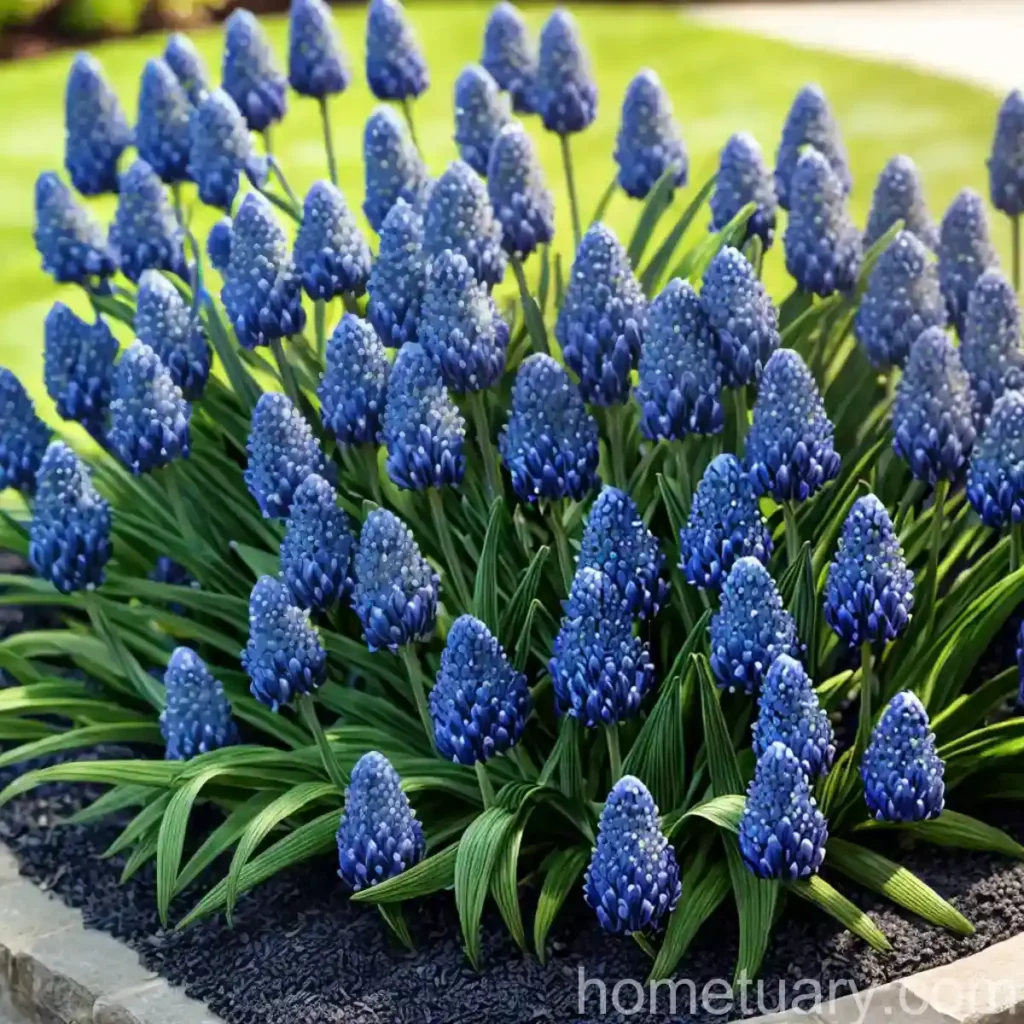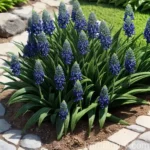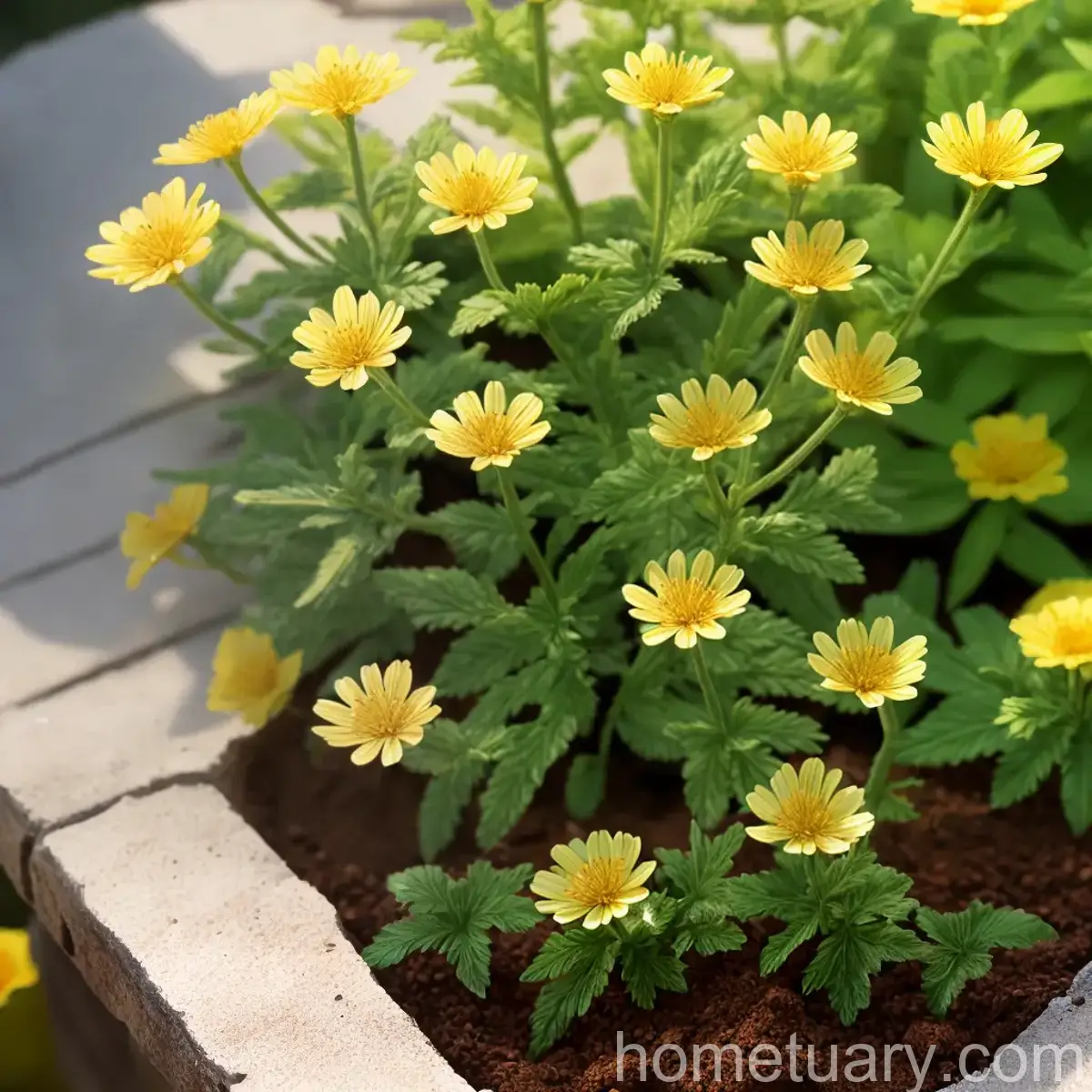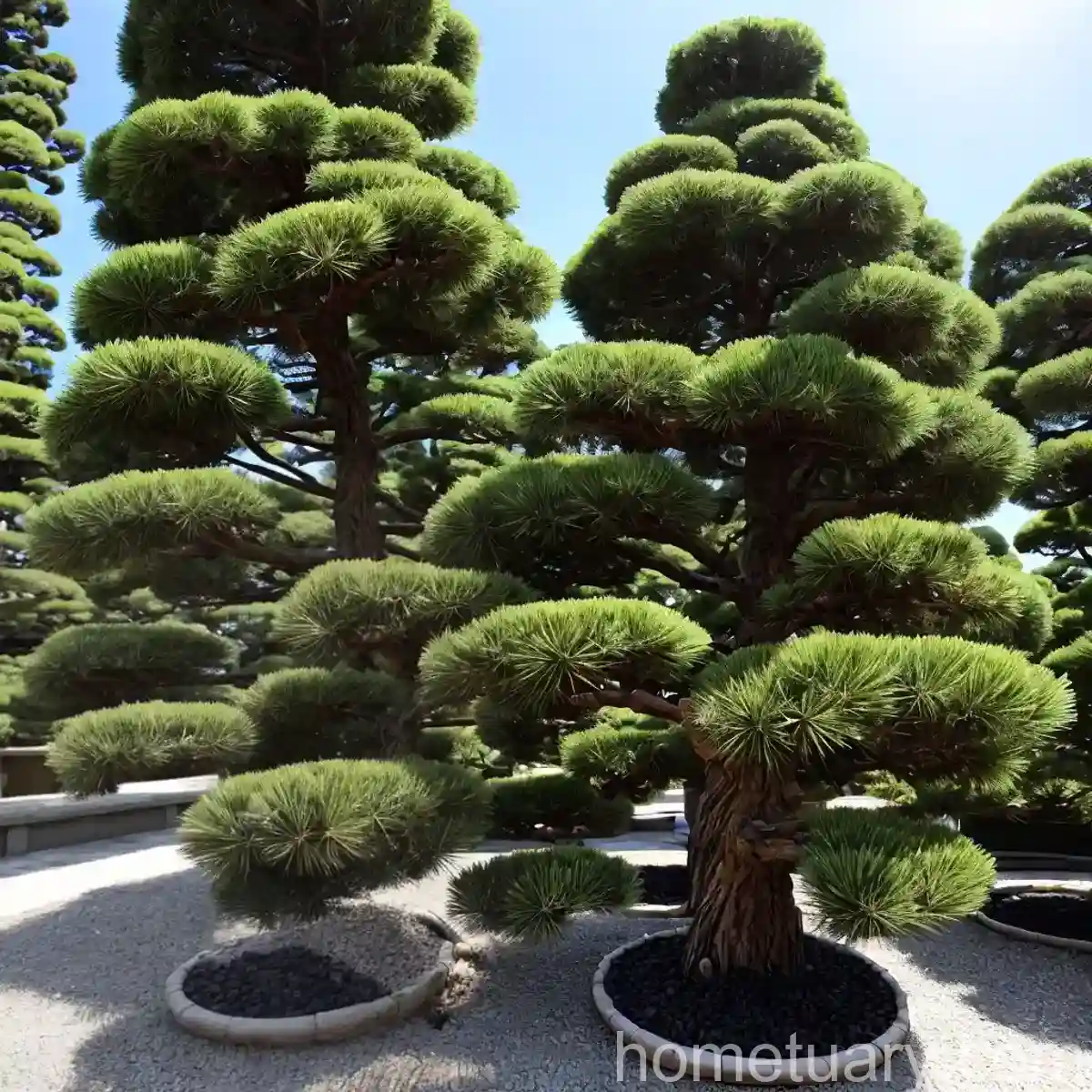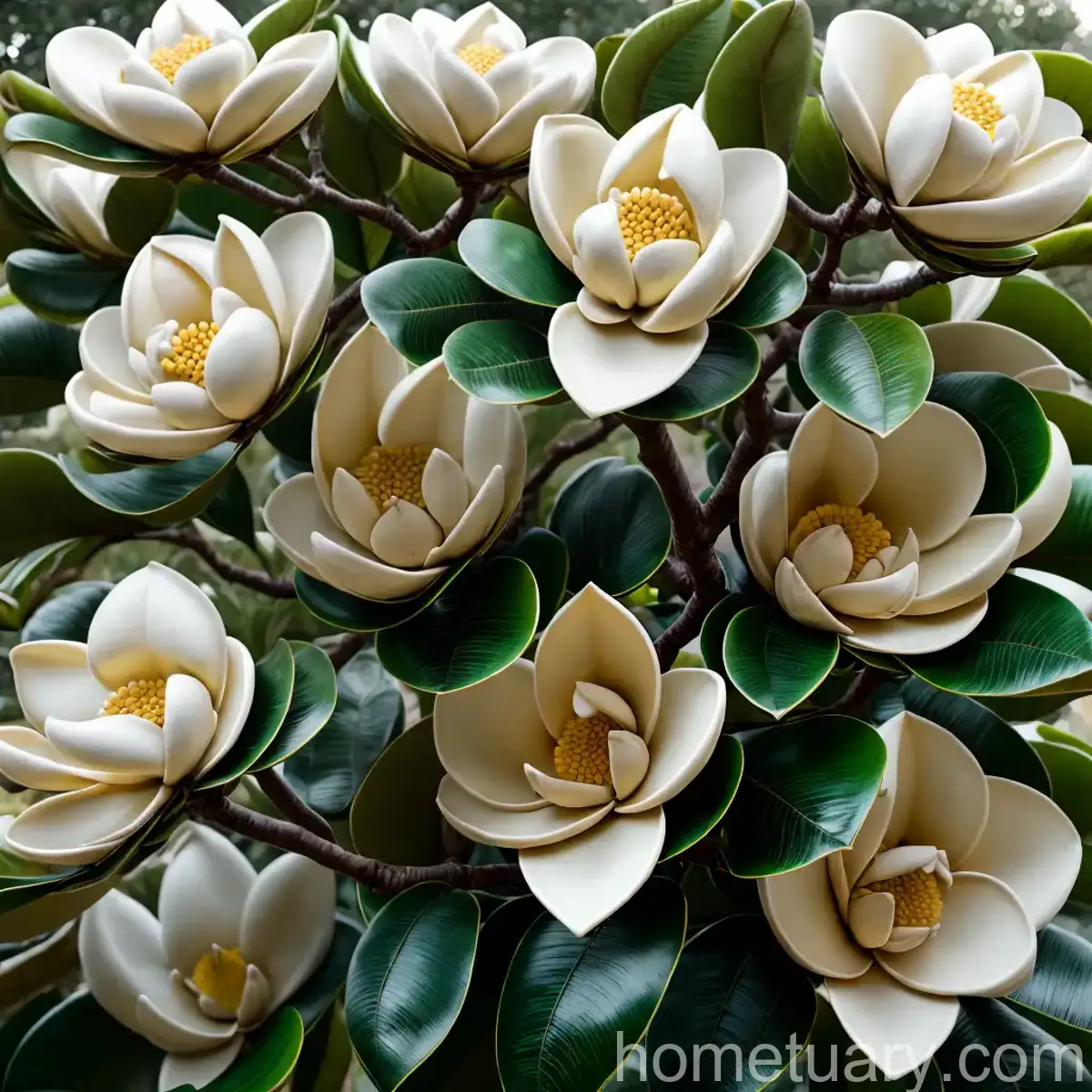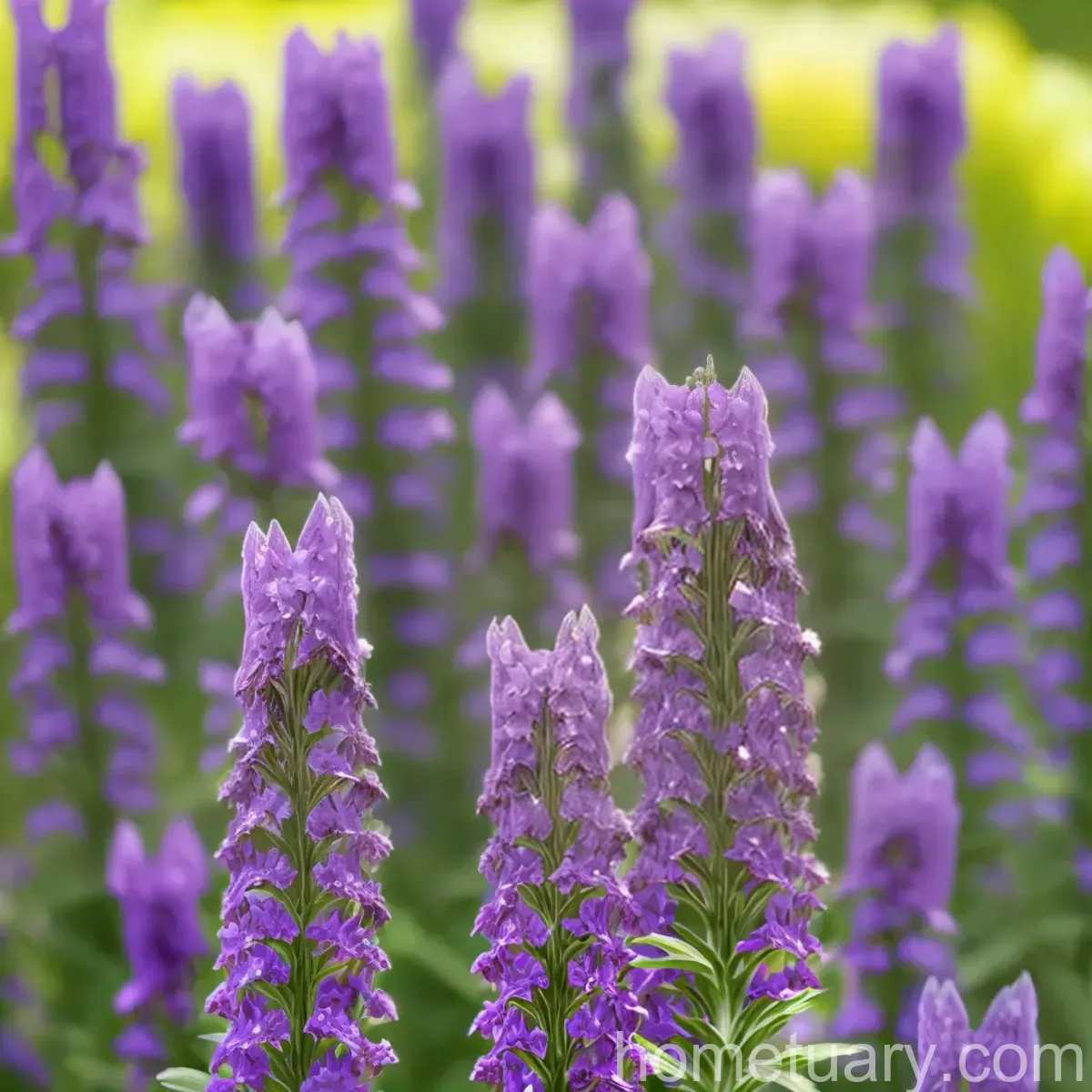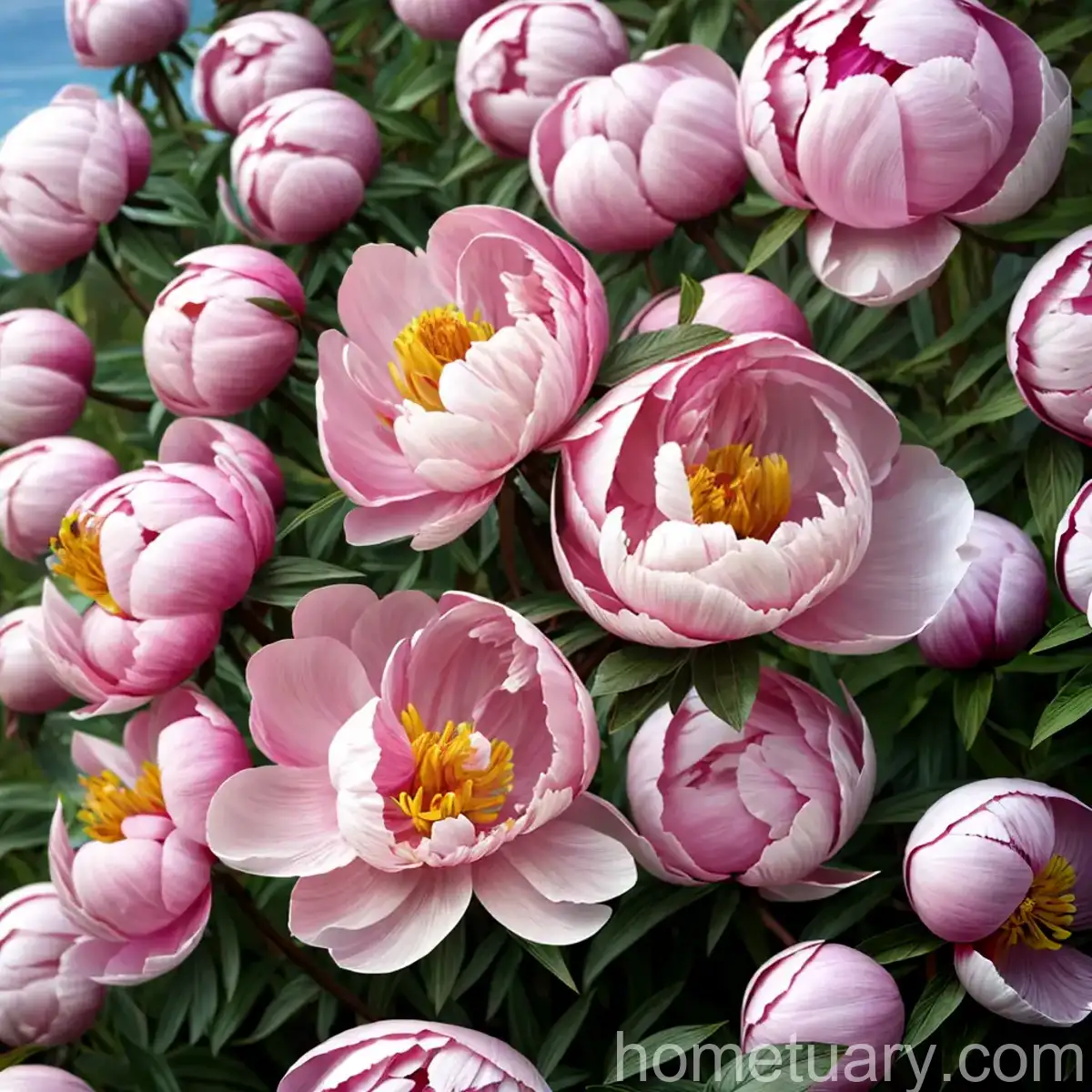Lily Turf (Liriope muscari ‘Tidwell’s Big Blue’): A Complete Guide
Liriope muscari, commonly known as lily turf, is a versatile and popular perennial plant loved by gardeners and landscapers alike for its impressive ornamental features, adaptability, and low maintenance requirements. Among the various lily turf varieties, ‘Tidwell’s Big Blue’ stands out for its attractive foliage and robust growth habit, making it a sought-after choice for enhancing landscapes and gardens.
In this comprehensive guide, we will delve into the fascinating world of lily turf (Liriope muscari ‘Tidwell’s Big Blue’), exploring its cultural requirements, uses in landscaping, propagation methods, maintenance tips, and much more. Whether you are a gardening enthusiast or a professional landscaper, this guide will equip you with the knowledge and techniques to cultivate and utilize lily turf to its fullest potential.
What is Lily Turf (Liriope muscari ‘Tidwell’s Big Blue’)?
Liriope muscari ‘Tidwell’s Big Blue’ is a cultivar of the Liriope muscari species, commonly referred to as lily turf. Belonging to the Asparagaceae family, this evergreen perennial is native to East Asia, including China, Taiwan, and Japan. It is cherished for its clumping, grass-like foliage and delicate, lily-like flowers that emerge in late summer to early fall, adding a touch of elegance to any garden or landscape.
The ‘Tidwell’s Big Blue’ variety is particularly prized for its bold, arching leaves that form dense mounds, coupled with striking violet-blue flower spikes that rise above the foliage, creating a stunning visual display. This cultivar is a favorite choice for its vigorous growth, making it an excellent ground cover or border plant in various outdoor settings.
Key Takeaways – Lily Turf (Liriope muscari ‘Tidwell’s Big Blue’)
Before we delve deeper into the specific aspects of lily turf (Liriope muscari ‘Tidwell’s Big Blue’), let’s highlight some key takeaways about this remarkable plant:
-
Cultural Requirements: Lily turf (Liriope muscari ‘Tidwell’s Big Blue’) thrives in well-drained soil and prefers partial to full shade, making it a versatile choice for various landscaping conditions.
-
Uses in Landscaping: This plant is widely used as a ground cover, border plant, or mass planting in both residential and commercial landscapes, adding texture, color, and visual interest.
-
Propagation: Propagating lily turf can be achieved through division of clumps or through seed propagation, providing opportunities for expanding plantings or sharing with others.
-
Maintenance: Low-maintenance and relatively pest and disease resistant, lily turf requires minimal care once established, making it an ideal choice for busy gardeners.
-
Versatile Applications: From rock gardens to urban landscapes, lily turf (Liriope muscari ‘Tidwell’s Big Blue’) is adaptable to a wide range of environmental and design conditions, making it a valuable addition to any setting.
Now that we have a snapshot of the key attributes of lily turf (Liriope muscari ‘Tidwell’s Big Blue’), let’s delve into each aspect in detail to gain a comprehensive understanding of this remarkable plant.
Culture
Understanding the cultural requirements of lily turf (Liriope muscari ‘Tidwell’s Big Blue’) is essential for successful cultivation and integration into landscaping and garden designs. From soil preferences to watering needs, here’s a detailed look at the cultural aspects of this plant:
Soil
Lily turf thrives in well-drained, loamy soil with a slightly acidic to neutral pH level. While it can tolerate a range of soil types, including clay and sandy soils, ensuring good drainage is crucial to prevent waterlogging, which can lead to root rot. Amending the soil with organic matter such as compost can enhance its structure and fertility, promoting healthy growth and vigor.
Water
Established lily turf plants have moderate drought tolerance, making them suitable for landscapes that require low to moderate watering. However, during the initial establishment phase and in prolonged dry periods, regular watering is essential to promote healthy root development and overall vitality. Watering deeply but infrequently is preferred over frequent, shallow watering to encourage deep root growth and resilience.
Sunlight
Liriope muscari ‘Tidwell’s Big Blue’ is well-adapted to partial to full shade conditions, making it an ideal choice for areas with limited direct sunlight. While it can tolerate some morning sun or dappled shade, prolonged exposure to intense afternoon sun may result in leaf scorching or decreased vigor. When selecting planting locations, consider the available sunlight throughout the day to provide the optimal conditions for lily turf cultivation.
Uses
Lily turf (Liriope muscari ‘Tidwell’s Big Blue’) offers a myriad of uses in landscaping, thanks to its versatile growth habit, ornamental features, and adaptability to various environmental conditions. Whether used as a ground cover, border plant, or accent feature, this plant adds visual appeal and functionality to outdoor spaces. Let’s explore some common uses of lily turf in landscaping:
-
Ground Cover: The dense, grass-like foliage of lily turf ‘Tidwell’s Big Blue’ makes it an excellent choice for creating a lush ground cover in shaded or partially shaded areas. Its ability to form dense clumps helps in weed suppression and erosion control, making it an attractive and practical solution for large expanses of ground.
-
Border Plant: When planted along pathways, garden borders, or around tree bases, lily turf creates a defined edge and serves as an effective barrier between different landscape elements. Its low-growing nature and tidy appearance make it a popular option for delineating garden beds and enhancing the overall structure of the landscape.
-
Mass Planting: The ability of lily turf to spread and form dense colonies makes it well-suited for mass plantings, where it can create a uniform carpet of foliage and flower spikes. Mass plantings of lily turf ‘Tidwell’s Big Blue’ are particularly striking when used under trees, along slopes, or in naturalized garden settings.
-
Erosion Control: Due to its robust root system and spreading growth habit, lily turf aids in controlling soil erosion on slopes and embankments. Its ability to establish a stable ground cover helps in preventing soil loss and preserving the integrity of the landscape.
-
Container Planting: While lily turf is commonly used in outdoor landscapes, it also serves as an attractive and low-maintenance option for container gardening. When potted in suitable containers, it adds a touch of greenery and texture to patios, decks, and outdoor living spaces.
-
Shaded Areas: The shade tolerance of lily turf makes it an invaluable addition to landscapes with limited sunlight, such as woodland gardens, shaded borders, and under the canopy of larger trees. Its ability to thrive in low-light conditions allows for the creation of visually appealing plantings in areas that receive minimal direct sun.
-
Mixed Plantings: Incorporating lily turf ‘Tidwell’s Big Blue’ into mixed plantings and perennial borders adds texture, color contrast, and year-round interest. Its evergreen foliage and periodic flowering contribute to the seasonal dynamics and visual appeal of mixed plantings.
Fertilizer
Proper fertilization plays a significant role in supporting the growth, vigor, and flowering performance of lily turf (Liriope muscari ‘Tidwell’s Big Blue’). While this plant is relatively low-maintenance, providing essential nutrients through well-timed fertilization can enhance its overall health and ornamental value. Here are some key considerations when fertilizing lily turf:
Timing
Early Spring: As lily turf emerges from winter dormancy, applying a balanced, slow-release fertilizer can support the initial growth and development of new foliage. Look for a fertilizer with equal or approximately equal proportions of nitrogen, phosphorus, and potassium (e.g., 10-10-10 or 20-20-20). Applying fertilizer when the soil is slightly moist can aid in its uptake by the roots.
Mid-Summer: A second round of fertilization in mid-summer can help sustain the plant’s vitality and encourage flower bud formation for the following season. Using a liquid or granular fertilizer designed for flowering ornamental plants can provide the necessary nutrients to support robust growth and promote blooming.
Application
When applying fertilizer to lily turf, ensure even distribution across the root zone while avoiding direct contact with the foliage. Lightly scratch the granular fertilizer into the soil surface, followed by thorough watering to facilitate nutrient uptake. For liquid fertilizers, dilute as per the manufacturer’s instructions and apply directly to the soil around the base of the plant.
Note: Always follow the specific recommendations provided by the fertilizer manufacturer regarding application rates and frequency to prevent over-fertilization and potential damage to the plant.
Organic Options
In addition to conventional synthetic fertilizers, organic alternatives such as compost, well-aged manure, or organic-based granular fertilizers can be employed to nourish lily turf while enhancing soil health. Organic amendments contribute to the long-term fertility of the soil and support the overall balance of nutrients essential for healthy plant growth.
Pruning
Appropriate pruning practices play a vital role in maintaining the aesthetics and health of lily turf (Liriope muscari ‘Tidwell’s Big Blue’). Regular pruning helps in managing the plant’s growth, removing spent flower spikes, and rejuvenating the foliage. Here are some essential guidelines for pruning lily turf:
Removal of Spent Flower Spikes
As the flowering season concludes, the faded flower spikes of lily turf should be pruned to enhance the plant’s appearance and redirect its energy towards foliage and root development. Using sharp, clean pruners, trim the flower stalks close to the base of the plant, taking care not to damage the emerging foliage or other healthy stems.
Tidying Up Foliage
Throughout the growing season, periodic removal of discolored, damaged, or senescent foliage helps in maintaining a neat and healthy appearance. By gently pulling or cutting out undesirable foliage, the overall vigor and aesthetic appeal of the plant can be preserved.
Division of Clumps
Over time, lily turf may form dense clumps that can benefit from division to rejuvenate the plants and prevent overcrowding. Division is typically performed in early spring or fall. Carefully dig up the clump, separate the individual plant sections, and replant them in suitable locations, ensuring proper spacing and soil preparation for optimal growth.
Considerations for Tools
When pruning lily turf, utilize sharp, sanitized pruning equipment to ensure clean cuts and minimize the risk of introducing pathogens. Disinfecting the pruning tools with a solution of one part bleach to nine parts water before and after use helps in preventing the spread of diseases.
Proper pruning not only enhances the overall appearance of lily turf ‘Tidwell’s Big Blue’ but also contributes to its long-term health and vitality, promoting vigorous growth and abundant flowering.
Propagation
The propagation of lily turf (Liriope muscari ‘Tidwell’s Big Blue’) can be achieved through several methods, including division of clumps and seed propagation. These techniques offer opportunities to expand plantings, rejuvenate established clumps, and acquire new plants for further landscaping and gardening projects. Let’s explore the two primary methods of propagating lily turf:
Division of Clumps
Division is one of the most common and effective methods for propagating lily turf, particularly in late winter or early spring. Follow these steps to divide lily turf clumps successfully:
-
Prepare the Clumps: Select healthy, well-established clumps of lily turf that have developed multiple crowns and vigorous roots. Water the plants a day or two before division to ensure they are adequately hydrated.
-
Digging and Separation: Carefully dig around the perimeter of the clump, loosening the soil to facilitate the extraction of the entire root ball. Gently lift the clump from the ground and place it on a flat surface. Using a sharp spade or knife, divide the clump into smaller sections, ensuring that each division has a sufficient number of crowns and a healthy root system.
-
Replanting: Once divided, reposition the individual sections in prepared planting sites, ensuring proper spacing and soil amendment. Thoroughly water the newly planted divisions to settle the soil and promote root establishment.
-
Post-Planting Care: Provide consistent moisture and appropriate environmental conditions to support the recovery and establishment of the divided lily turf divisions.
Seed Propagation
While less commonly employed than division, lily turf can also be propagated from seeds. Here’s an overview of the seed propagation process:
-
Seed Harvesting: Allow the flowers of lily turf to mature and produce seeds. Once the berries ripen and turn dark, collect the seeds by carefully extracting them from the berries.
-
Seed Starting Medium: Fill seed trays or small containers with a well-draining, sterile seed starting mix. Moisten the mix to achieve uniform moisture throughout.
-
Sowing Seeds: Gently press the lily turf seeds into the surface of the seed starting medium, ensuring they are in firm contact with the soil. Lightly cover the seeds with a thin layer of additional seed starting mix.
-
Environmental Conditions: Place the seed trays in a warm, well-lit location with indirect sunlight. Maintain consistent moisture levels while avoiding waterlogging, which can lead to seed rot.
-
Seedling Care: As the seeds germinate and seedlings emerge, provide adequate light and maintain optimal moisture levels to support their healthy growth. Thin out overcrowded seedlings to allow for proper development.
Propagation of lily turf through division and seed sowing offers practical and cost-effective approaches to increasing plantings and introducing new specimens into landscapes and gardens.
Container Popularity
The versatility and low-maintenance nature of lily turf ‘Tidwell’s Big Blue’ make it a popular choice for container planting and gardening. Whether utilized in outdoor containers, hanging baskets, or mixed planters, this plant adds visual interest and texture to various outdoor spaces. Let’s explore the factors contributing to the container popularity of lily turf:
Aesthetic Appeal
The lush, arching foliage and upright flower spikes of lily turf make it an attractive addition to outdoor containers, contributing to the visual appeal and overall design of patios, decks, balconies, and garden spaces. Its evergreen nature and periodic flowering offer year-round interest, enhancing the container displays.
Versatility
Lily turf adapts well to container culture, thriving in a wide range of pot sizes and types. This versatility allows for creative combinations with other ornamental plants, enabling the creation of diverse container arrangements suited to different design preferences and environmental conditions.
Low Maintenance
For individuals seeking low-maintenance container plants, lily turf ‘Tidwell’s Big Blue’ offers an ideal solution. Once established in containers, it requires minimal care, making it an excellent choice for busy homeowners, urban gardeners, and gardening enthusiasts looking for hassle-free gardening options.
Shaded Environments
The shade tolerance of lily turf makes it particularly well-suited for container gardening in shaded or partially shaded locations. Its ability to thrive in low-light conditions provides opportunities for incorporating greenery and color into areas that receive limited direct sunlight.
Container planting expands the potential applications of lily turf (Liriope muscari ‘Tidwell’s Big Blue’), allowing it to enrich outdoor living spaces, enhance landscapes, and complement various design styles and preferences.
Common Diseases
While lily turf ‘Tidwell’s Big Blue’ is generally resilient and resistant to many diseases, it can occasionally encounter certain issues that affect its health and appearance. Familiarizing oneself with common diseases and their management is essential for safeguarding the vitality of this ornamental plant. Let’s examine some of the typical diseases that may impact lily turf and their associated symptoms:
Anthracnose
Symptoms: Anthracnose can manifest as dark, sunken lesions on the leaves, often with a water-soaked appearance. As the disease progresses, the affected areas may expand and develop a characteristic necrotic center.
Management: To manage anthracnose, implement cultural practices such as adequate plant spacing to promote air circulation, avoiding overhead watering, and applying fungicidal treatments as per the manufacturer’s recommendations.
Rhizome Rot
Symptoms: Rhizome rot is characterized by the decay and discoloration of the plant’s underground rhizomes. Affected plants may exhibit wilting, yellowing foliage, and a general decline in vigor.
Management: To mitigate rhizome rot, ensure well-drained soil conditions, and refrain from overwatering. Removing and disposing of affected plant material can prevent the spread of the disease.
Rust
Symptoms: Rust infections often result in the development of orange to yellow pustules on the leaves, which may lead to premature leaf drop and reduced photosynthetic capacity.
Management: Managing rust involves maintaining adequate air circulation, minimizing leaf wetness, and applying fungicidal treatments when necessary. Regular removal of infected leaves can help in limiting the spread of rust within the planting.
Fungal Leaf Spots
Symptoms: Fungal leaf spots appear as dark, water-soaked lesions on the foliage, often surrounded by a yellow halo. As the spots enlarge, they can coalesce and cause extensive damage to the leaves.
Management: Employing good sanitation practices, such as removing and disposing of affected leaves, along with promoting proper airflow and reducing leaf moisture, can contribute to the prevention and management of fungal leaf spots.
Regular monitoring and prompt intervention are crucial for mitigating the impact of diseases on lily turf (Liriope muscari ‘Tidwell’s Big Blue’). By implementing proactive management practices, gardeners can preserve the health and vitality of this ornamental plant.
Disease Diagnosis
Early detection and accurate diagnosis of diseases affecting lily turf ‘Tidwell’s Big Blue’ are essential for implementing effective management strategies and preventing the spread of infections. When observing symptoms suggestive of potential diseases, it is important to conduct a thorough assessment and seek the appropriate guidance for diagnosis. Here are steps to consider when diagnosing diseases in lily turf:
Symptom Identification
Carefully examine the plant for any abnormal symptoms, including leaf discoloration, spotting, wilting, or decay. Take note of the location, extent, and progression of the symptoms, as well as the prevailing environmental conditions and cultural practices.
Consultation with Professionals
If uncertain about the cause of the symptoms, seek the expertise of horticulturists, plant pathologists, or certified arborists. Consulting with professionals can aid in identifying potential disease agents and determining the most appropriate course of action for management.
Laboratory Analysis
In instances where a definitive diagnosis is needed, consider submitting plant samples, including affected foliage or roots, to diagnostic laboratories or extension services. Laboratory tests can help in identifying specific pathogens and guiding the selection of targeted control measures.
By actively engaging in disease diagnosis and seeking the necessary support, gardeners can gain insights into the health status of lily turf and take proactive measures to maintain its well-being and longevity.
Common Pests
While lily turf ‘Tidwell’s Big Blue’ is generally resistant to many common pests, it may encounter occasional infestations that necessitate attention and management. Being vigilant for signs of pest activity and familiarizing oneself with the pests that may impact

